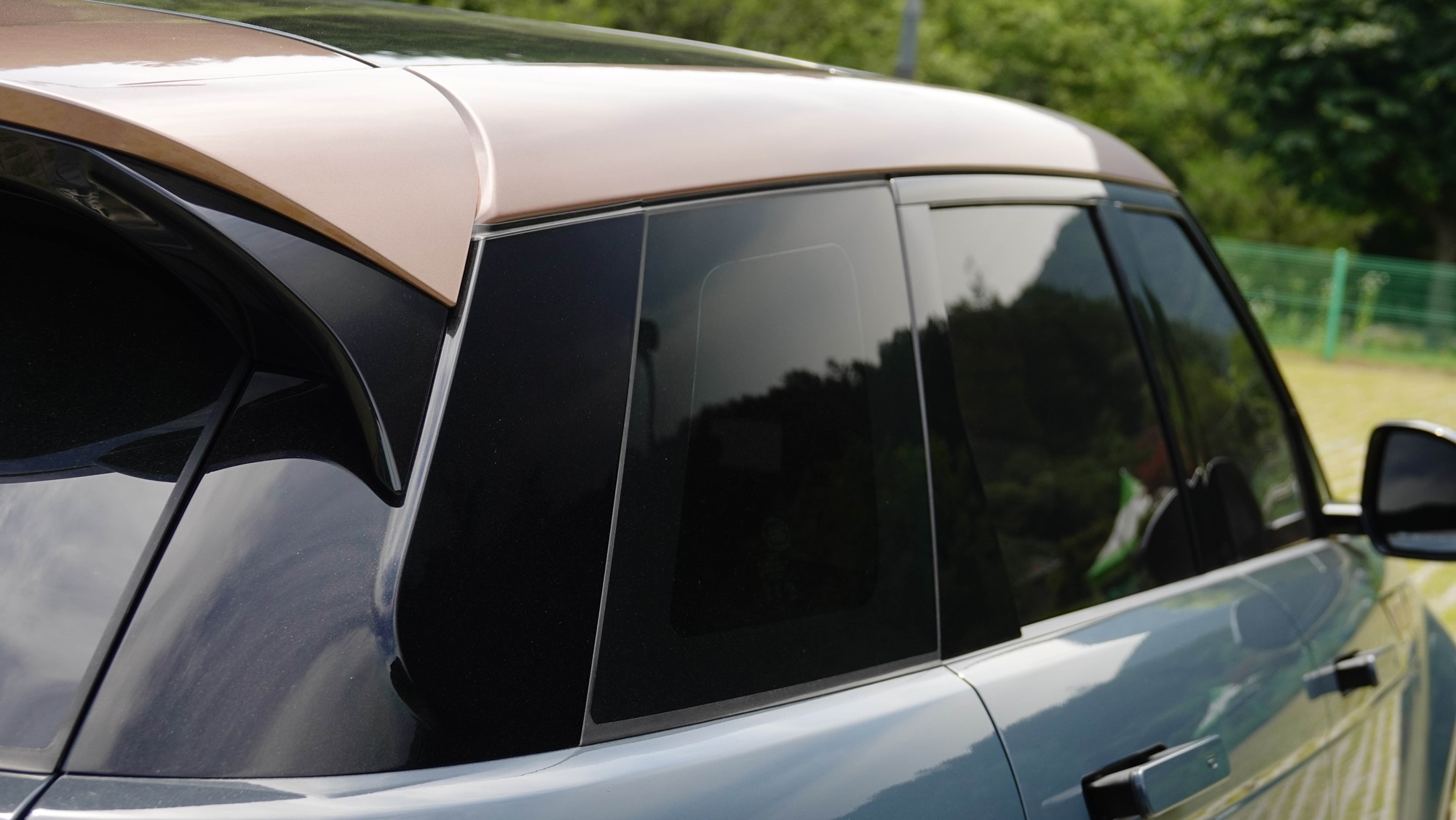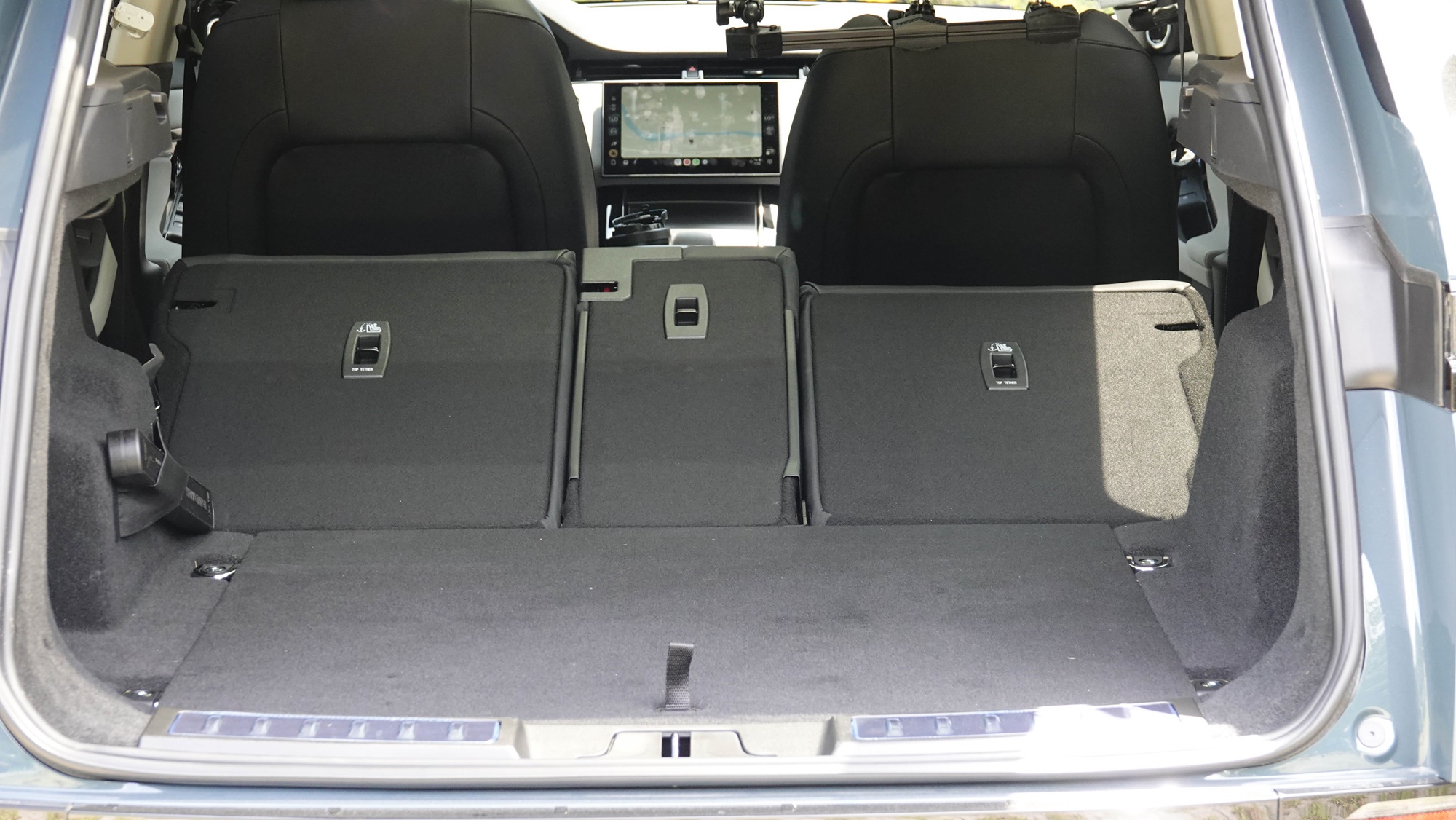
We are introduced to the minimalism of the British premium compact SUV, the ‘Evoque’.
The new Range Rover Evoque is the entry model of the Range Rover family. Entry models from premium brands are the result of compromises among various conflicting values.

The challenge lies in being premium yet entry-level: keeping prices low while maintaining luxury, ensuring enough space despite compactness, and setting minimum pricing that holds premium brand dignity. This delicate balance dictates how much concessions are needed, where a slight misstep can lead to success or failure in premium entry-level models.
The Evoque exemplifies this. It is available in two trims in Korea: the P250 S and P250 Dynamic SE, with our test vehicle being the higher trim, P250 Dynamic SE.

The illusion of a floating roof is created by the black A, B, C, and D pillars that support it. This is a fun design with a clever twist. The radiator grille and headlamps reflect the characteristics of the Range Rover lineage well.
The interior is impressive. Only two necessary buttons remain: the ignition button and the hazard light button, with everything else stripped away. With the ignition off, the simplicity becomes even more apparent. This is the ultimate expression of minimalism, leaving nothing more to eliminate.

The absence of buttons does not imply a lack of functionality. The luxuriousness of the materials can be felt at your fingertips. The appropriately elastic dashboard, and the smooth texture of the leather are evident. The buttons that have disappeared are replaced by an advanced Pivi Pro infotainment system. With just two taps on the 11.4-inch curved glass touchscreen, almost all desired functions can be activated, from navigation to indoor air quality management, Android Auto (or Apple CarPlay), and even driving mode selection.

The instrument panel features a 12.3-inch monitor. Drivers can select the screen layout and driving information. The gear shifter for the 9-speed automatic transmission snuggles into your hand like a fist when you grip it. Its simplicity enhances its elegance.
The Clear Sight rearview mirror displays the rear view through a camera and monitor. It allows for a clear and wide view, although it does not permit visibility of passengers inside, like children in the back seat. For that, the settings can be adjusted to a standard mirror view.

The Clear Sight Ground View provides a screen view of the terrain beneath the hood in off-road situations. It allows for evasive maneuvers when obstacles are present. However, if necessary, the driver should exit the vehicle to inspect the terrain directly before moving the car. Relying solely on this system could lead to issues.
It uses TMAP navigation, which is the best in South Korea. There’s no need to question it—just follow the directions given.

It features a 2.0-liter inline 4-cylinder gasoline turbocharged Ingenium engine. It’s uncertain whether to label it ‘pure,’ but it’s indeed a pure gasoline engine. The maximum output is 249 horsepower. Important stats include its weight: with a curb weight of 1,390 kg, it has a power-to-weight ratio of 7.75 kg per horsepower. The manufacturer claims a 0-100 km/h time of 7.6 seconds. These numbers give an idea of the car’s character; despite being a compact SUV, its figures are akin to those of a mid-size sedan.
Standard with an automatic Terrain Response 2 system, it can be controlled via Pivi Pro. It offers Comfort, Eco, Grass-Gravel-Snow, Mud, Sand, Dynamic, and Auto modes—adjusting the engine, transmission, AWD system, suspension, and stability control to provide optimal traction and stability.

The 9-speed transmission is a hidden weapon of this vehicle. It covers 0-100 km/h in 7.6 seconds, transitioning smoothly from 1,500 rpm in 9th to 6,000 rpm in 3rd gear. It offers a powerful push or a leisurely cruise at the same speed, blending the strengths of multiple gears seamlessly.
Although classified as a compact segment, it is not small. Its dimensions are 4,371 mm by 1,904 mm by 1,649 mm. The wheelbase is 2,681 mm, allowing for two clenched fists of space in the rear. Headroom, however, feels a bit constrained—about two palm widths. The center tunnel also protrudes. While it offers space for a compact SUV, the rear seating does feel somewhat cramped.

The trunk space offers 591 liters, expanding to 1,383 liters with the rear seats down, making it ideal for a camping trip with all the necessary gear.
With all-wheel drive, it not only boasts great driving stability but also extraordinary off-road capabilities. Its wading capability is remarkable, allowing it to traverse bodies of water up to 0.52 meters deep. Being able to cross such obstacles is impressive—it signifies dominance over sedans and faux SUVs, reaching places they cannot access, allowing encounters with the deeper essence of nature.

However, realistic problems can lead to dilemmas. High repair costs may deter off-road driving. Despite being an SUV optimized for off-road, fears of damaging the vehicle or incurring repair costs can keep drivers away from rugged trails. It’s a significant consideration. The sale price is 80,300,000 won, while the lower trim, the P250 S, is priced at 74,000,000 won.
During economical driving over a 60 km stretch from Yangpyeong to Seoul, the actual fuel efficiency recorded was 13.5 km/L, significantly exceeding the official combined efficiency of 8.9 km/L.

A Direct Insight from OJH
There are no ambient lights. The luxurious atmosphere created by lighting has been boldly sacrificed. What one feels in the dark is simplicity, not luxury. This ambiance does not fit a premium brand.
The console box cover has been divided into two parts. There might be an intention behind this, but it seems unnecessary. It feels a bit contrived. A single-cover design would be better.
OJH yes@autodiary.kr

